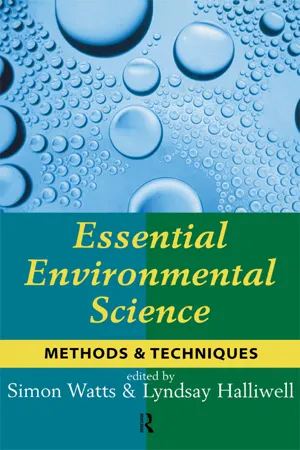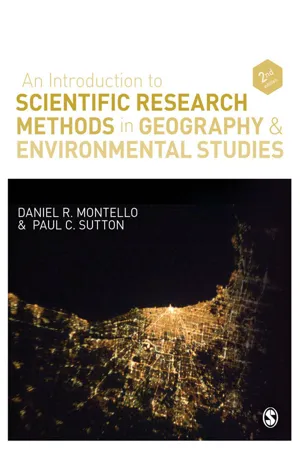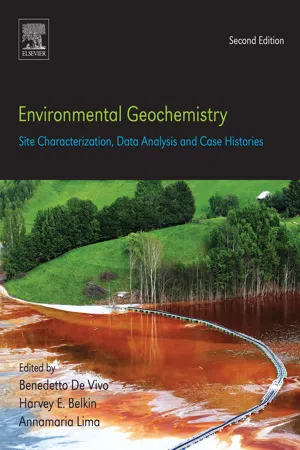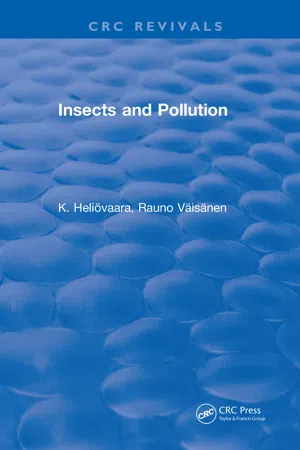Environmental Sampling Methods
Environmental sampling methods are techniques used to collect data on the physical, chemical, and biological characteristics of the environment. These methods include soil sampling, water sampling, air sampling, and vegetation sampling. They are essential for understanding the quality and health of ecosystems, identifying pollution sources, and assessing environmental impacts.
5 Key excerpts on "Environmental Sampling Methods"
- eBook - ePub
Essential Environmental Science
Methods and Techniques
- Simon Watts, Simon Watts(Authors)
- 2003(Publication Date)
- Routledge(Publisher)
...The difference is that, because of the nature of the physical system, random samples are very difficult to obtain (if possible at all). The following sections discuss the kinds of sampling frameworks available in the physical environmental sciences. see Section 2.2 2.3a Sampling in areas Phenomena studied in the environmental sciences are often not accessible, individual ‘things’ which can be numbered and subjected to an ordinary probability sampling procedure. Geologists are perhaps in the worst position of all, as their subject matter is almost all buried at depth and they must take whatever evidence they can from outcrops or drill holes that happen to be available. Under these conditions it is very difficult to demonstrate that a sample is unbiased. In some branches of the environmental sciences populations are more accessible (like plants and animals), but the problem often is that they do not consist of identifiable and separate objects. Air, water, soil and rock are continuous media, and variables like air temperature, soil depth and water salinity are spread continuously. For this type of variable, location is often used as the basis of the sampling procedure. Consequently, measurements are taken at particular points, along lines or traverses, or in small areas (quadrats) (see Fig. 2.1). There are several methods for deciding the location of your sample points, traverses and quadrats. Here we shall describe the most commonly used methods for deciding the location of sampling points. The principles apply also to traverse and quadrat sampling. Fig. 2.2 illustrates the sampling designs. The methodology of simple random sample selection is given in Box 2.2...
- Daniel Montello, Paul Sutton(Authors)
- 2012(Publication Date)
- SAGE Publications Ltd(Publisher)
...Both cluster and multi-stage area sampling are based on obtaining discrete cases distributed in spatial clusters or regions. This is typically the situation in human research in geography and environmental studies, where cases include such discrete entities as individual people, families, neighborhoods, cities, businesses, schools, governmental institutions, provinces, countries, and so on. In biophysical research, in contrast, sampling is very often done from entities such as oceans, rivers, the terrestrial surface, soil layers, and the atmosphere. The properties of these entities that interest geographers and environmental researchers are often phenomena that are continuously distributed in space, including many of the physical properties we discussed in Chapter 5 : elevation, temperature, precipitation, air pressure, salt concentration, CO 2 concentration, solar energy, and so on. These continuous distributions are known technically as “fields” in contrast to “objects” (we consider the conceptual distinction between fields and objects further in Chapter 13). When studying continuously distributed properties, geographers and environmental researchers sample locations within the fields (which are typically “field” sites in the sense we discussed in Chapter 8) and measure the properties at those locations. Our focus in this section is on this spatial sampling of continuously distributed phenomena. We noted in Chapter 2 that all measurements must necessarily have finite precision, so that actual data of any type always consist of discrete values. By the same token, we can conceive of properties as being truly continuously distributed in two or three dimensions of space, but our sampling from the space necessarily has finite precision. These considerations point to the strategy researchers use to sample from continuous fields...
- eBook - ePub
Environmental Geochemistry
Site Characterization, Data Analysis and Case Histories
- Benedetto DeVivo, Harvey Belkin, Annamaria Lima(Authors)
- 2017(Publication Date)
- Elsevier(Publisher)
...The basic sampling types discussed are the systematic, random, and judgmental sampling approaches. In addition to sampling procedures, sampling bias and sampling errors are introduced, leading to some guidance on sample handling, shipping, and chain-of-custody procedures. This chapter focuses on sampling methods for soil only. It has updated references for this second edition. Keywords Site characterization; Sampling; Number of samples; Field measurement 1 Introduction One of the first steps in planning a sampling program is to define the sampling objectives—why the samples need to be taken. Some reasons for sampling are to: • Show that a requirement applies. For example, a waste may require special treatment if it contains high levels of a certain contaminant (e.g., Pb). • Define the extent of contamination: when there has been a spill or a release, one may have to define the contamination plume in the groundwater, the downstream transport in a river, or the amount of soil affected by a leak. • Obtain background (benchmark) information: what were the conditions before a spill? • Audit: many jurisdictions require a facility to sample themselves to show compliance. The jurisdiction may conduct their own sampling to ensure the facility's analysis and reports are adequate. • Prove a violation: this is a common reason to sample. Here, the sample and the analytical results may become evidence in a court case. Types of sampling programs that could be used to meet these objectives are exploratory sampling, monitoring, and presence/absence sampling. 1.1 Exploratory Sampling Exploratory sampling is a sampling program organized to evaluate phase 1 assessment, the nature of the disturbance, the possible range of the concentration of the parameters, and the types of disturbance. Control samples are necessary with an exploratory sampling program...
- eBook - ePub
- K. Heliovaara(Author)
- 2018(Publication Date)
- CRC Press(Publisher)
...Chapter 3 Effects Of Pollution In Different Environments I. Spatial And Temporal Scales To understand the effects of pollution on insects and ecosystems as a whole, it is necessary to view the patterns and processes on the appropriate spatial and temporal scales. Investigations of biological systems should be carried out at various hierarchical levels in order to ensure that lower-level driving forces and higher-level regulating processes are included. 90 Recently, Eberhardt and Thomas 412 described and classified methods for designing environmental studies. The main problem identified by them was the inadequate sample sizes used in field experimentation. They defined eight categories of techniques for field studies, in terms of the nature of control exerted by the observer, by the presence or absence of a perturbation, and by the domain of study (Figure 1): Experiments with replication were preferred when feasible. Confirmation of the fact that two experimental outcomes are indeed different depends on randomization and replication to provide a measure of variability in units treated alike. In experiments without replication, cost or circumstances prohibit replication, whereas in intervention analysis, the intervention is not subject to control by the investigator. Intervention analysis measures the effect of known perturbation in a time series. Sampling for modeling is an efficient form of experimentation for parameter estimation in specified nonlinear models. Observational studies contrast selected groups from a population. Analytical sampling provides comparisons over the entire population. Instead of experimentation in intact, functioning ecosystems, parts of systems or model ecosystems such as microcosms, are normally used, but any real confirmation will depend on combining the experimental data with observations of real-world systems...
- eBook - ePub
Interpreting Soil Test Results
What Do All the Numbers Mean?
- Pam Hazelton, Brian Murphy(Authors)
- 2016(Publication Date)
- CSIRO PUBLISHING(Publisher)
...The sampling program can include the following fundamental patterns (NSW EPA 1995a ; Laslett and McBratney 1995; Brown 1999 ; McKenzie et al. 2008 ; NEPC 2013a): • judgemental – selection of sample sites is based on prior knowledge of the site and professional judgement. There is a risk that sampling using this method can be subject to bias, even if unintentional, reducing the confidence in any statistical analysis using these results. However, it can be a very efficient method for sampling and minimising costs of analysis. Much depends on the experience and knowledge of the person taking the samples. This can be most useful in preliminary and exploratory investigations; • systematic – selection of sample sites is based on regularly spaced sites on a grid or transect. Various patterns of transects may be used including: zig-zag patterns or herringbone patterns which can ensure adequate spatial coverage of the target area and minimise the likelihood of ‘hot spots’. The intensity of sampling depends on the purpose of the sampling. For example, to obtain an estimate of the need for liming on a paddock, the sampling intensity needs to be sufficient to obtain an overall estimate of the soil pH. In investigating potential soil contamination, the sampling intensity must ensure that any ‘hotspots’ are detected; series of transects within a paddock or assessment area; transects are based on strata defined as; • stratified – the assessment area is separated into non-overlapping sub-areas or strata from which a planned number of samples are taken. Within the strata, the sampling locations are often chosen at random to give a stratified random sampling pattern. The strata are sometimes chosen so that the area within the strata may have some degree of uniformity. Alternatively, the strata may be derived by simply dividing the assessment area into equal area strata (Brus et al...




